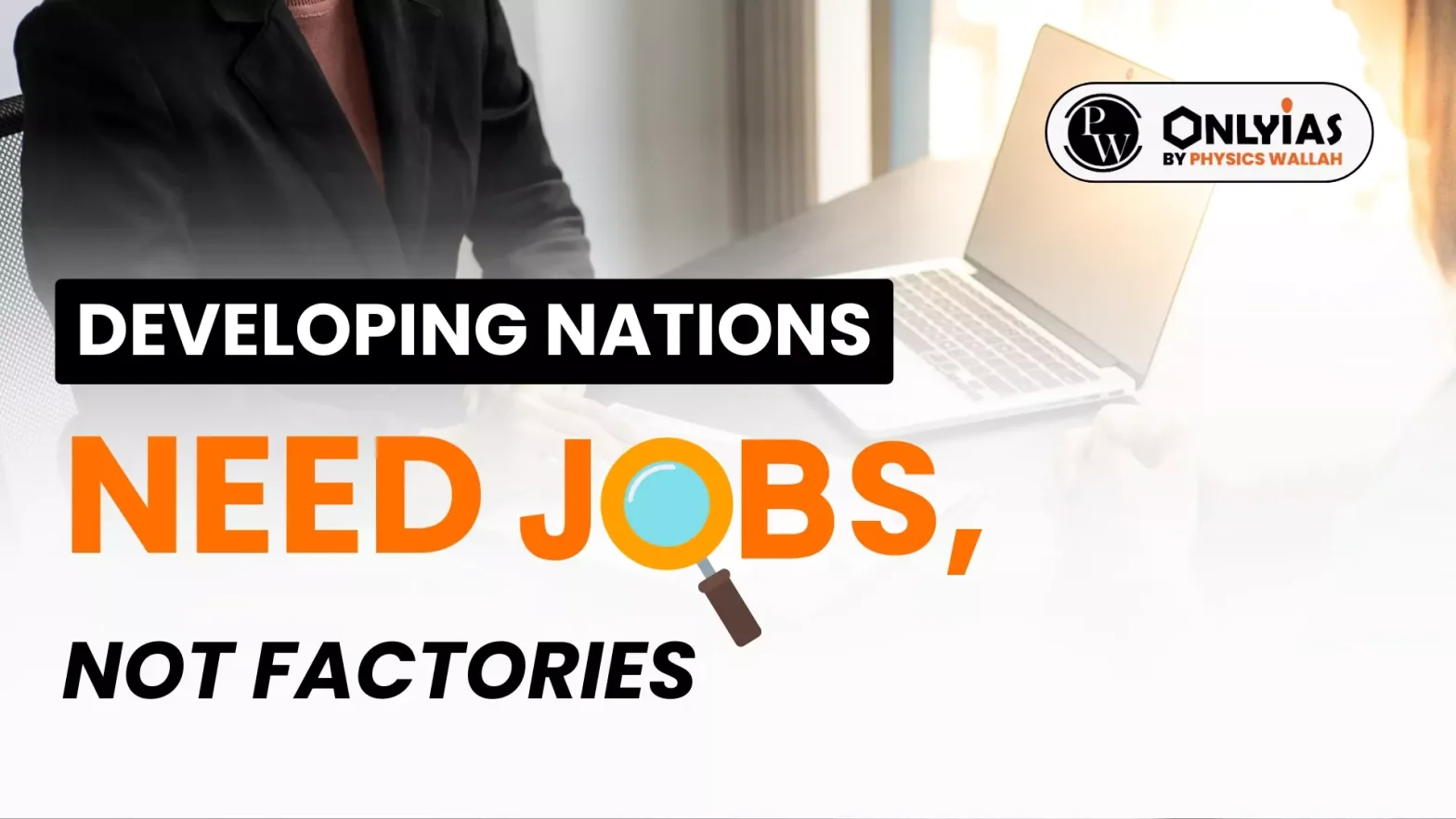The future of developing countries is in services. This may sound odd in view of the fact that industrialization has been the traditional road to growth and eventual prosperity, one travelled by all of today’s rich economies and by more recent successes such as South Korea, Taiwan and China.
| Relevancy for Prelims: Sectors of economy, labour-intensive techniques, etc.
Relevancy for Mains: Role of innovation in manufacturing, Employment opportunities in developing countries etc. |
Developing Nations Need Jobs
- Manufacturing seems even more essential given that industrial policies to revive it are back in fashion in the US and Europe.
- But today’s manufacturing is different.
- Innovation in manufacturing has taken a predominantly skill-biased form, reducing demand for workers with relatively low levels of education.
- New technologies such as automation, robots and 3D printing directly substitute physical capital for labour.
Enroll now for UPSC Online Course
- While firms in developing countries have an incentive to use more labour-intensive techniques, competing in the global marketplace requires employing production techniques that cannot differ significantly from those used in the frontier economies, because the productivity penalty otherwise would be too high.
- The need to produce according to the exacting quality standards set by global value chains restricts how much unskilled labour can substitute for physical capital and skilled labour.
- Thus, the rising skill- and capital-intensity of manufacturing in turn means that globally competitive, formal segments of manufacturing in developing countries have lost the ability to absorb significant amounts of labour.
- They have effectively become ‘enclave sectors,’ not too different from mining, with limited growth potential and few positive effects on the supply side of the rest of the economy.
- This means that enhancing productivity in labourabsorbing services has become an essential priority, for reasons of both growth and equity.
- Since the bulk of jobs will be in services, these jobs need to be productive enough to support income growth.
- The conundrum is that we do not know much about how to raise productivity in labour absorbing services.
- The challenge is to increase productivity in labour-absorbing services such as retail, care and personal and public services, where we have had limited success, in part because such services have never been an explicit target of productive development policies.
- In a new paper, we describe four strategies for expanding productive employment in services that create the most jobs in developing countries.
- The first focuses on established, large and relatively productive incumbent firms, and it entails incentivizing them to expand their employment, either directly or through their local supply chains.
- These firms could be large retailers, platforms such as ride-sharing services, or even manufacturing exporters (with potential to generate upstream linkages with service providers).
- The second strategy focuses on small enterprises (which constitute the bulk of firms in most developing countries) and aims to enhance their productive capabilities through the provision of specific public inputs.
- These inputs could be management training, loans or grants, customized worker skills, specific infrastructure or technology assistance.
- Given the heterogeneity of such firms, ranging from micro-enterprises and self-owned proprietorships to mid-size companies, policies in this domain require a differentiated approach that respond to their distinct needs.
- Moreover, given the numbers involved, policies often also require a suitable mechanism for selecting among the most promising firms, since most are unlikely to become dynamic and successful.
- The third strategy focuses on the provision, to workers directly or to firms, of digital tools or other forms of new technologies that explicitly complement low-skill labour.
- The objective here is to enable less educated workers to do (some of) the jobs traditionally reserved for more skilled professionals and to increase the range of tasks they can perform.
- The fourth strategy also focuses on less educated workers and combines vocational training with ‘wrap-around’ services, a range of additional assistance programmes for job seekers to enhance their employability, retention and eventual promotion.
Check Out UPSC Modules From PW Store
Conclusion
To enhance growth and equity, developing countries must boost productivity in labour-absorbing services through targeted strategies for large firms, small enterprises, digital tools, and vocational training.
![]() 28 Jun 2024
28 Jun 2024

